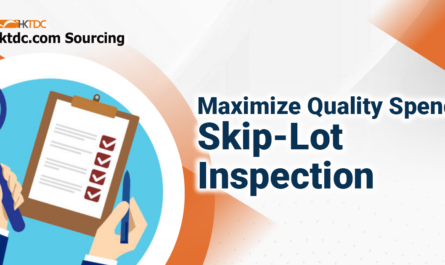Imagine you’ve been working with a manufacturer in Vietnam to produce a line of laptop bags for the last two years, and the relationship has gone well. You have reasonable quality standards for your product, and you feel like the factory has met them. Then, one day, you notice a one-star review, then another, and another — you receive a deluge of unexpected customer complaints.
Everything was great a year ago, and people were raving about your bags. So, why are they suddenly complaining about the stitching coming apart, the strap adjuster breaking, and the zipper busting open?
In this scenario, you may be experiencing a phenomenon known as “quality fade” — a common occurrence in low-cost manufacturing countries. Let’s talk about what it is, why it happens, and how to prevent it from happening to you.
Quality fade is the slow, gradual degradation in the quality of a product over time, and it is a common issue in low-cost manufacturing countries such as China, Vietnam, or India.
Your initial production run with the factory may be successful, and they might seem to maintain a good track record over the course of your partnership. However, at some point, they start substituting in slightly cheaper materials or cutting corners in small increments over time. Quality slowly starts to fade, and since the increments are so small, no one notices.
Then, one day, a big problem manifests itself, leading to a recall or a rash of customer complaints and returns. Although it seems to have happened suddenly, the degradation was actually subtle and progressive.

Why Does Quality Fade Happen?
There are a few key reasons for this phenomenon.
#1 Pressure to Reduce Costs
Factories operating in a competitive environment feel intense pressure to reduce costs. They might have razor-thin margins, but buyers expect them to keep costs low or even lower their pricing over time. Meanwhile, their material and labor costs steadily climb higher.
Quality starts to fade as they look for ways to reduce costs, and they make design modifications without your knowledge. It can happen in secret, but it is not always malicious. Quality fade occurs because they are not working collaboratively with the buyer to make decisions about product changes.

#2 Lack of Clear Specifications
As a buyer, you have a responsibility to clearly specify all material and other requirements in a specification sheet or BOM list. And if you do not have a golden sample, the factory may not feel tied to the original production standards.
Perhaps you have a plastic part, and the factory initially made it in a vibrant shade of blue. Over time, they reduced the pigment mix, and the color slowly went from a bright blue to a faded blue. The difference is only noticeable when comparing the current product to one from a year ago, but you only specified that it should be “blue,” so technically, it matches your requirements.
If you had provided a clearer color specification, such as a specific Pantone number, and maintained a golden sample for comparison, you would have more of a leg to stand on. And if you don’t conduct your own quality inspections on a regular basis, you don’t have a process for comparing products to your specifications.
#3 Complacency With Quality Standards
Sometimes, there is a level of complacency on the buyer’s part when it comes to inspections. For example, they’ve specified that an acceptable variance in product measurements is 2.5mm. However, the variance is consistently 3mm, and shipments are accepted every time, despite receiving a FAIL result.
Other times, because the buyer has such a great relationship with the manufacturer and they have a good history of working together, they stop conducting inspections altogether. And with less accountability, there is less pressure on the factory to meet specific standards.
How Can You Prevent Quality Fade With Your Products?

It is vital to understand that costs usually go up over time and rarely go down. Importers should understand this and try to have an open and honest dialog with their manufacturers. When costs increase, you should either:
- Be willing to pay more for the same product at the same level of quality, or
- Work collaboratively with the factory and brainstorm low-impact design changes that are acceptable to everyone.
You should make every effort to partner with your factories and help them reduce their costs collaboratively. For example, perhaps you have a product with a stainless steel part that you can replace with a high-quality rubber one. This substitution might be preferable to using a lower grade of metal.
Before you can begin partnering on design changes, you must be sure you have set clear expectations and are holding them accountable.
We say in the industry that “quality begins with the buy.”
This means that you need to set expectations by doing the following:
- Maintain a detailed bill of materials (BOM), where applicable, and a detailed specification sheet that you include with each purchase order.
- Develop approval samples or material samples at the start of your relationship and keep them for comparison to each product batch.
- Create a clear and specific quality plan and inform suppliers that you will conduct quality inspections.
Most of all, don’t become complacent. Just because you have a good relationship with your manufacturer and a good history of quality output does not mean you should stop conducting inspections altogether.
Take the Right Steps to Avoid Quality Fade
Quality fade is a common problem in low-cost manufacturing countries and can wreak havoc on your supply chain. It can manifest as a major quality issue that appears to come almost out of nowhere. In reality, it’s just the result of a slow and gradual degradation in quality over time. It can occur due to pressure from buyers to keep costs low coupled with a lack of quality control and accountability measures.
To avoid quality fade with your products, it is important that you spend your quality dollars wisely, have a clear quality plan in place, and collaborate with factories to see how you can lower costs together or pay more.
This article was originally published on the Insight Quality Services website.

Andy Church – Founder & CEO of Insight Quality Services
Andy Church has over 20 years of experience in product quality and founded his company in 2014. Insight Quality provides product inspections, factory audits, lab testing, and other services in 17 countries worldwide.
Source quality goods free from risks of quality fade at our e-Marketplace by clicking through the above banner!
Subscribe to NewsBites and stay updated on the latest business trends and news.




















